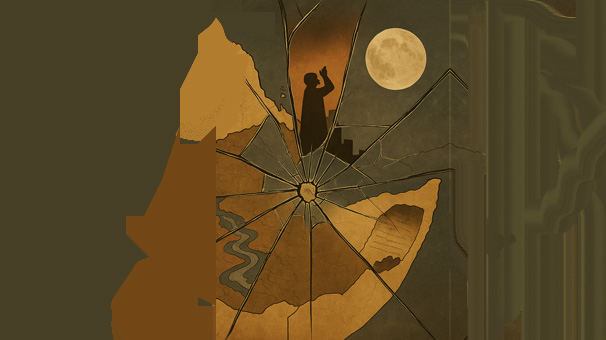Beneath the Rooftop Howl: A Response to Tekeste Negash’s Historiography Shackled by Irredentism

“I saw the best minds of my generation destroyed by madness, starving, hysterical, naked,
dragging themselves through the Negro streets at dawn looking for an angry fix…”
Allen Ginsberg, Howl, 1956
Disclaimer:
This is not a portrait of a man, but of a method.
Tekeste Negash’s body may remain in Uppsala, but his arguments walk barefoot through Eritrea’s contested history. This mirror is not aimed at the man, but at the image his scholarship reflects.
What follows is not a biography. It is narrativized historiography made personal. Because the stakes are personal.
The Silted Pen
If my writing seems unsanitized, it is because I refuse to wash my hands of the present or the infinite possibility that a future might hold, if only we could just think outside the box, as they say.
I write with silt under the nails, not out of defiance, but out of inheritance. Because sometimes, history isn’t a profession. It’s a fever. A rooftop howl at the edge of reason. A cracked mirror held toward a past that won’t stop bleeding into the present.
Uppsala, 1986.
In a quiet room somewhere above the frost line, a manuscript, No Medicine for the Bite of a White Snake, is completed. Tekeste Negash writes about resistance in Eritrea from 1890 to 1940.
At that very moment, Eritrean fighters are digging trenches with blistered hands. The 8th offensive by the Derg is underway. And in the mountains of Sahel, history is not being written. It is being lived with shrapnel, hunger, and bone.
What does it mean to draft the anatomy of a struggle while absent from its pulse?
There is a kind of historiography that clings to the past not as a key but as a lock, a rusted apparatus used not to open doors toward collective futures but to bolt them shut from any possibility of cohabitation in differences. The piece offered by Tekeste Negash is not merely a chronology of 19th-century Horn politics; it is a choreography of grievance dressed in the scholarly garb of irredentism. Cloaked in academic prose, it rehearses a well-worn performance: Menelik betrayed, Yohannes martyred, Tigrinya irredentism suppressed, and Eritrean independence regrettable, a narrative scaffolded not by the malleability of time but by a fixation on ancestral wounds recast as territorial claims.
1986.
The Battle of Afabet is two years away. The revolution is at its most fragile and its most determined. In exile, Tekeste drafts his historiographic arc.
He does not see the trenches.
He does not smell cordite.
He does not bury his comrades.
But his prose buries something else: the possibility that Eritrean resistance was not just real but legitimate.
The Historian as Gatekeeper
As Heidegger reminds us, time is not a line but a field of unfolding; the past is not behind us; it is that which we carry into possibility. But this mode of historical narration does not carry. It coagulates. It forces the past to perform the desires of the present, rather than allowing the present to interrogate the silences of the past. In Tekeste’s formulation, the Treaty of Wuchale becomes a kind of original sin, and Adwa a partial redemption only because Eritrean soil was not reclaimed. In this cosmology, victory is only real if it includes annexation.
There is no shame in writing from a distance. But there is danger in pretending that distance is clarity. Tekeste’s writings do not interrogate Eritrea’s resistance as lived experience. They reframe it as a historical aberration. They turn memories into mistakes.
It is easier to mourn a federation than to recognize a people’s will.
It is easier to archive a grievance than to co-author a future.
Ressentiment as Cosmology
The Horn cannot be mapped by cartographic longing. It is not a broken empire to be reassembled; it is a womb. The place from which Homo sapiens first departed, and yet to which we cannot return, because we do not know how to live with the mirror of ourselves. Our reptilian minds remain alert to borderlines and betrayals, even as the Red Sea and the Rift Valley whisper older truths. We howl at the moon from rooftops not because we mourn the dead, but because we’ve forgotten how to dream together.
The invocation of Blatta Gebre Egziabeher’s lament, accusing Menelik of urinating away Ethiopia, is telling. It is not history; it is historical ressentiment that stares in the face at self-abasement. And ressentiment is no compass. It is a loop. It cannot point north.
From Uppsala, one can mistake frost for clarity.
But clarity comes only from standing in the heat of memory.
From the howl, not the archive.
The Howl as Method
Let us be clear: we are all heirs to this failure. Everyone who thinks has a chip in their brain, every witness, every silence. We have all, at times, mistaken the archive for a weapon, the map for a scripture, and the wound for a birthright. But it is time to ask a different question:
What would it mean to be from the Horn and yet not seek to possess it?
What if memory was not a claim but a chorus?
As Allen Ginsberg howled for the soul of his generation amid brick tenements and neon-lit decay, so too must we howl for the Horn, not as possession, not as inheritance, but as possibility. A place where borders do not dictate kinship. A place where rivers remember more than treaties do. A place where the moon, still full, asks nothing of us but to unshackle time.
Let the past be a field, not a fortress.
Let the howl be a bridge, not a border.
References
-
Ginsberg, Allen. Howl and Other Poems. San Francisco: City Lights Publishers, 1956.
-
Heidegger, Martin. Being and Time. Translated by John Macquarrie and Edward Robinson. New York: Harper & Row, 1962.
-
Negash, Tekeste. No Medicine for the Bite of a White Snake: Notes on Nationalism and Resistance in Eritrea, 1890–1940. Uppsala: Uppsala University, 1986.
-
U.S. Department of State. Background Notes: Eritrea, 1994.
-
Gebre Egziabeher, Blatta. Cited in Tekeste Negash, No Medicine for the Bite of a White Snake.


Awate Forum